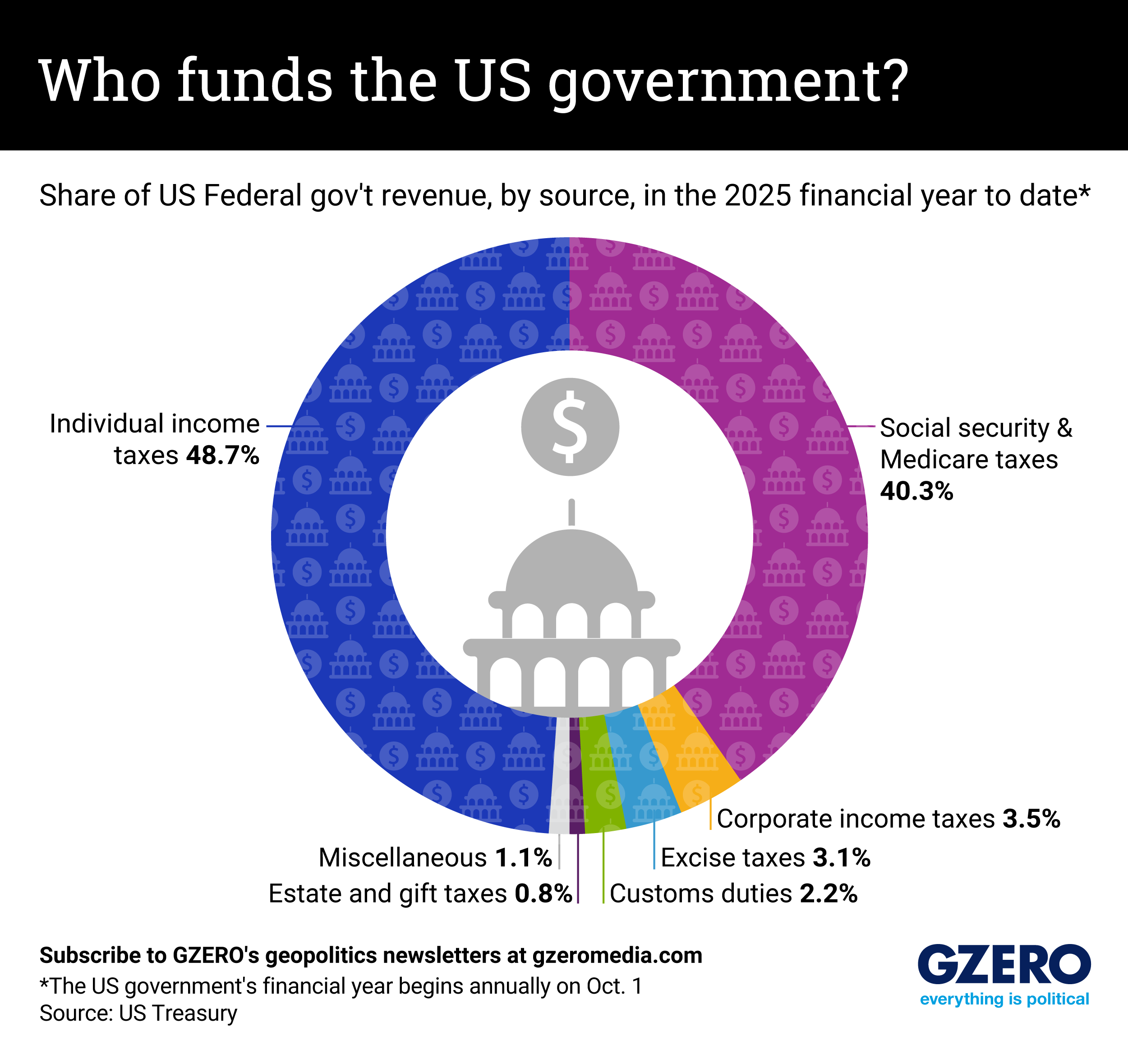January 08, 2025
The US government currently raises about $5 trillion a year in revenue. That plus another $2 trillion in debt are what make up the nearly $7 trillion that Uncle Sam spends annually.
But where does that revenue actually come from? Here’s a look at the breakdown.
Bear in mind, as you look at this, that incoming US president Donald Trump has suggested he wants to replace the income tax with his new tariffs. Would that be possible?
It’s true that until the income tax was implemented in the early 20th century, tariffs provided the lion’s share of US government revenue. But that was a time before social security, medicare, or a modern military when the government spent barely $500,000 a year.
With Trump’s tariffs expected to raise, at best, about $300 billion per year, using them to replace income taxes would entail an unfathomably radical shrinking of the US federal government.
More For You
- YouTube
In his latest Quick Take, Ian Bremmer explains a major shift in the Ukraine war: Europe, not the United States, is now driving the strategy.
Most Popular
- YouTube
In 2025, GZERO’s Global Stage coverage highlighted a recurring theme: artificial intelligence is transforming every corner of the globe.
- YouTube
It's one of the few sources Americans across the political spectrum still rely on.
Then-US President George W. Bush waves as he stands with then-People's Republic of China President Jiang Zemin after the two gave statements to the press following their meeting at Bush's ranch in Crawford, Texas, on October 25, 2002.
At the start of the 21st century, Destiny’s Child was atop the US charts, “Google” was a little known search website with a weird name, and two things happened that would shape the world we live in today.
© 2025 GZERO Media. All Rights Reserved | A Eurasia Group media company.
